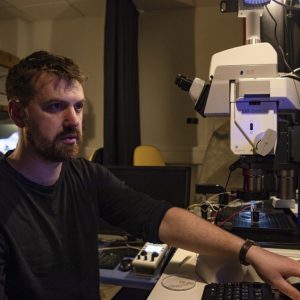Robert Kelly-Bellow
Postdoctoral Scientist
Mechanical insights from robotic manipulations.
The microscopic world of growth is full of interactions. Plants respond to their environment, tissue layers grow in relation to one another, some cells are squeezed against each other, and molecules within cells bounced around.
All these exchanges require are the result of forces, but we don’t really know what they are or where they come from. Even worse, forces cannot be visualised in the same way as something like genes can be. Therefore, finding out which forces are at play can be quite tricky.
Robert uses a combination of robotics and imaging to perturb a system and track the effects. By torturing the plant through pulling, pushing or poking, it can reveal some its secrets as to which forces are at play.
